The castle dominates the skyline and view on the east side of the island of Ischia. Omnipresent as the background, it sits on its own islet, connected to the main island by a 15th century stone bridge. Its history is too complex to try to repeat in this blog post, but here are three links to photo and information sites:
http://www.italyheaven.co.uk/campania/ischia/ischiaponte.html
http://www.castelloaragonese.it/
http://www.castellodischia.it/index_en.html
This tiled sign is in Spanish and makes me wonder about its history.
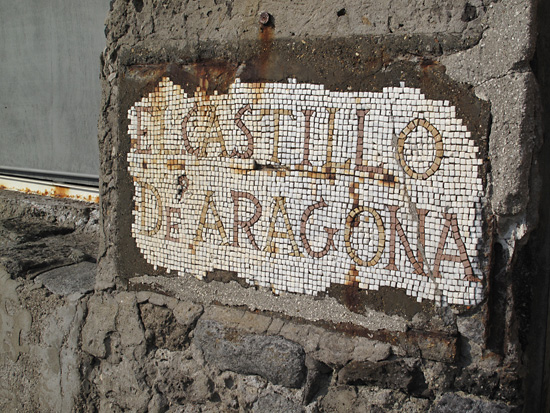
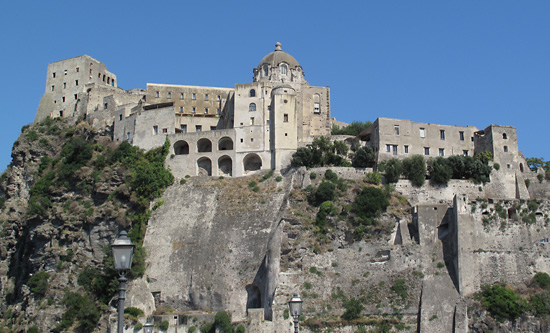
Inside the dome of the Church of Santa Maria delle Grazie.
A remaining portion of a Giottesque fresco from the 14th century, located in the nobles’ crypt beneath the Cathedral. There are olive trees and gardens amongst the castle buildings.
One of the two most bizarre features of the Castello Aragonese is the Nun’s Cemetery, located beneath the church. The bodies of deceased nuns were placed on chairs carved out of the stone that included basins with drain holes. The bodies would slowly decompose and the bodily fluids were gathered in special vases below the drains. “This macabre custom was based on the need to highlight the utter uselessness of the body since it is simply a container for the spirit; refusal of individual burial also underlined the same conviction. Each day the remaining nuns would go to pray and meditate on death and since they passed several hours of the day in such an unhealthy environment, they often contracted serious illnesses, which sometimes proved fatal… The dried skeletons were later heaped in the ossuary.”
“The Convent of Our Lady of Consolation was founded in 1575 and hosted about 40 nuns of the Clarisse Order. Most of the nuns were firstborn daughters from noble families, destined to a cloistered life from childhood in order to leave the family inheritance to the firstborn male. The convent was abolished in 1810.”*
*From the official Castle brochure.
The other disturbing feature of the castle was a small museum of torture devices, presenting both the implements and illustrations explaining their uses. I’m not a squeamish person, but that display made me wince and made me wonder how we humans can do such things to each other. (“Waterboarding” was one of the things presented in the museum of torture. Hmmm.)
There are vast tunnels and passageways throughout the mountain. It must have been quite a bustling fortress.
This view reminded me of the American Southwest and Georgia O’Keeffe’s paintings.
A view from the castle, high above the port of Ischia.

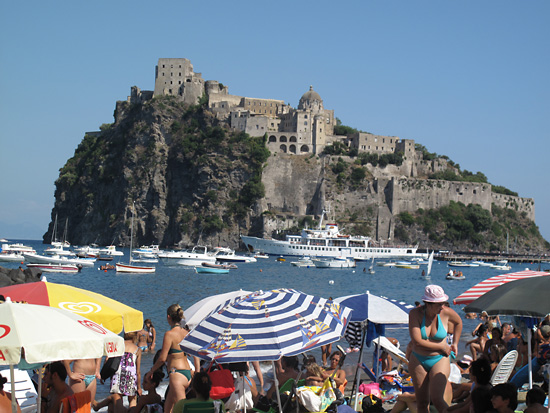
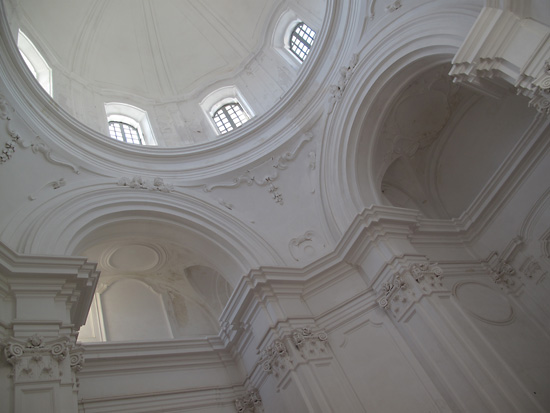
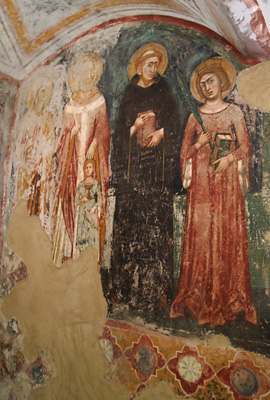
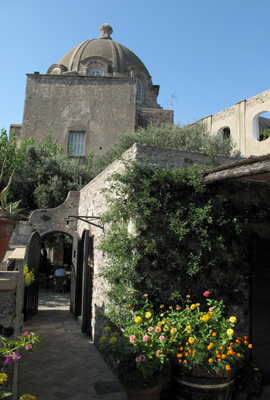
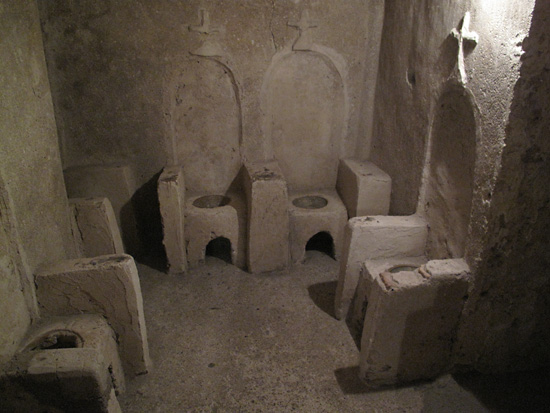
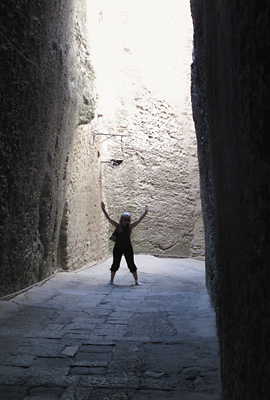
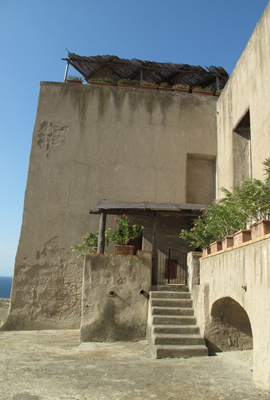
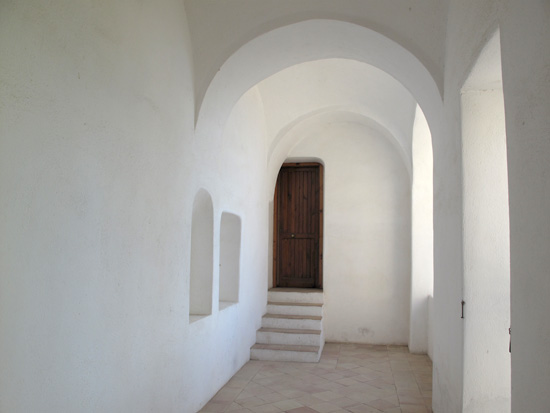
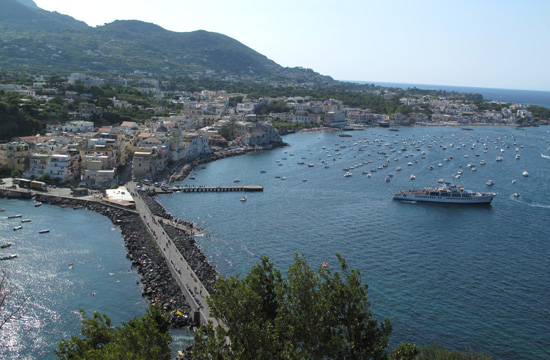
I just finished reading a book called People of the Book in which there was a chapter on the Spanish Inquisition, which was difficult to read. It is appalling what many religious institutions will inflict on those poor souls who don’t follow the “correct and true” way or worship the “correct” God.
Yeah. Who knows what aroused torture in those days… I’ll tell ya, looking at some of the devices and the images was enough to make a strong-constitutioned person weak.